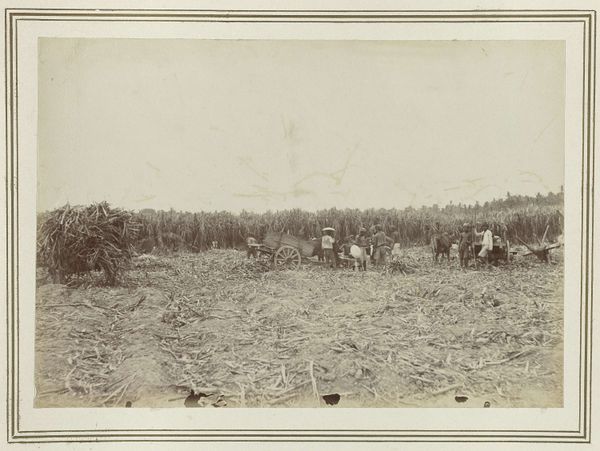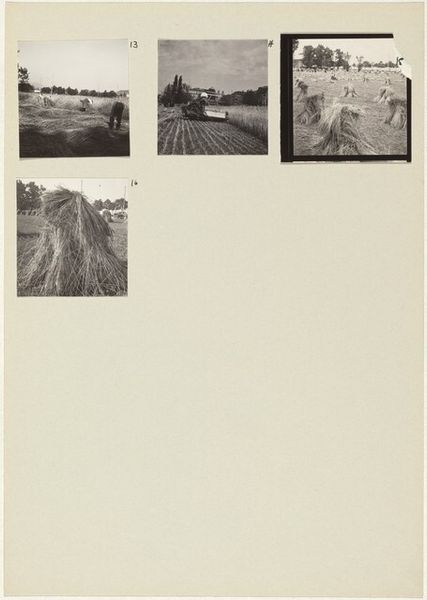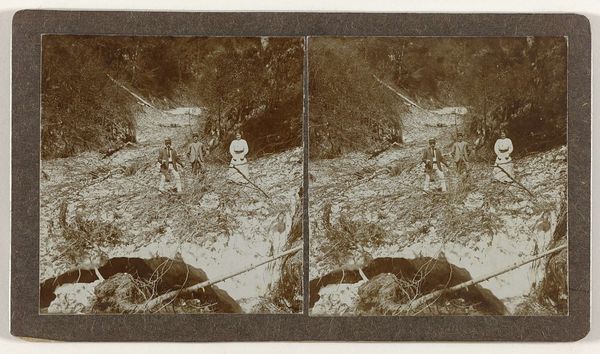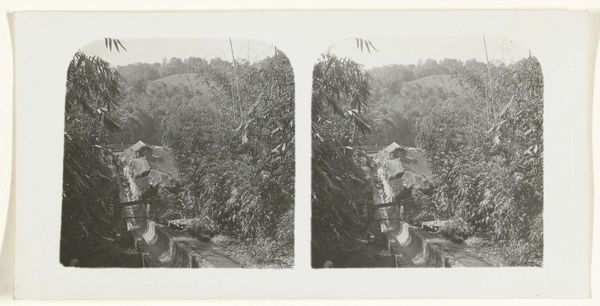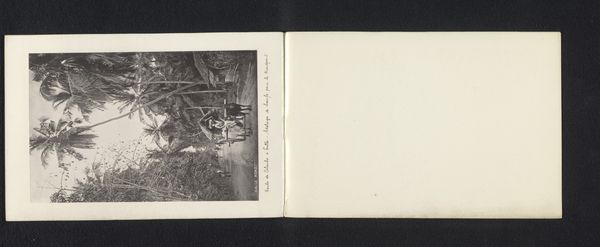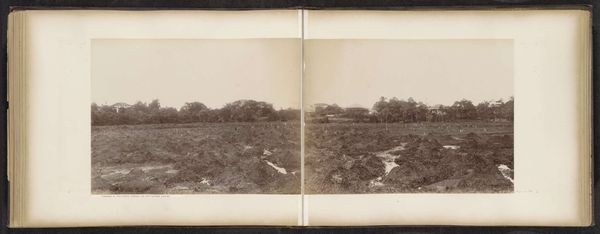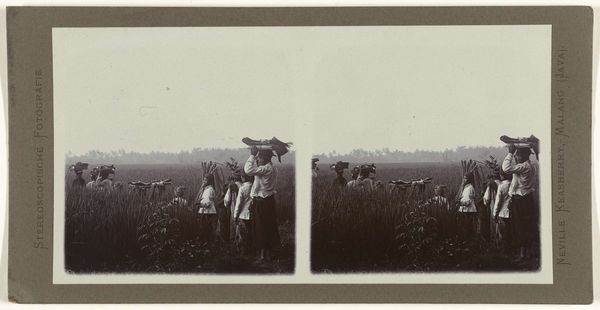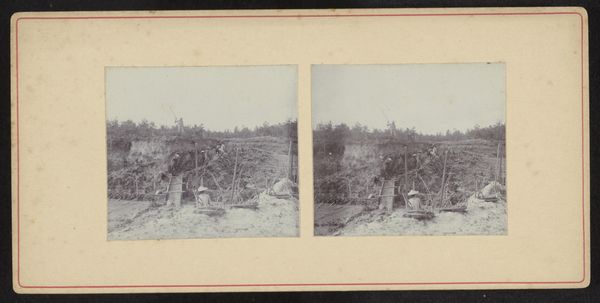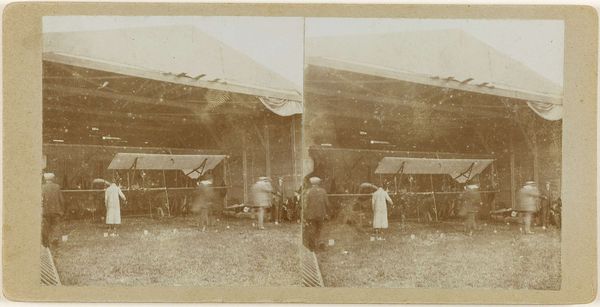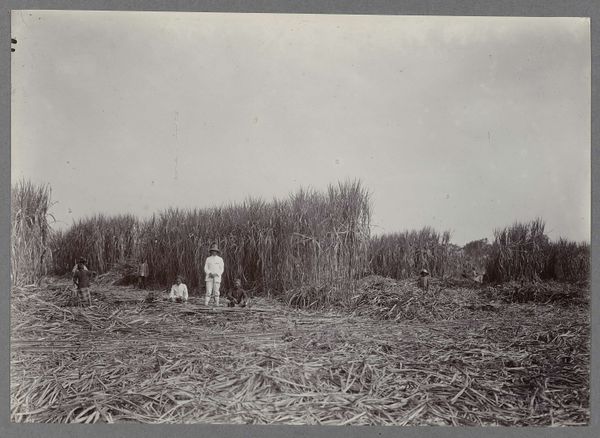
contact-print, photography
#
landscape
#
contact-print
#
photography
#
orientalism
#
realism
Dimensions: height 76 mm, width 152 mm
Copyright: Rijks Museum: Open Domain
Editor: This photograph, titled "Suikerrietmolen in een veld," or "Sugarcane Mill in a Field," dates from somewhere between 1900 and 1935. It's a contact print by Neville Keasberry. It has this stark, almost desolate feel, yet there is a beauty. What do you see in this piece? Curator: It’s fascinating how a seemingly straightforward landscape can be so laden with historical and social complexities. Here, we're looking at a scene that speaks volumes about colonialism and the exploitation of labor. What appears at first glance to be a simple depiction of rural life is, in fact, deeply implicated in power dynamics. What labor relations supported this landscape and the mill represented here? Editor: The tag "orientalism" stood out to me as something to consider with this picture. I thought of exoticism. Curator: Exactly! Consider how the “orientalist” gaze often romanticized such scenes, obscuring the harsh realities of sugarcane production, especially its reliance on enslaved labor after its establishment by the Dutch East India Company. Editor: It really puts the sugarcane in a completely different context than how I've seen it depicted. How does understanding the social implications change your interpretation of the piece's aesthetic qualities? Curator: It prompts us to interrogate the picturesque, challenging us to ask: whose perspectives are privileged and whose are marginalized within this representation? The formal beauty, the "realism" if you will, cannot be separated from these ethical considerations. Are we implicated by passively accepting the beautiful representation of injustice? Editor: I guess seeing it outside of a simple picture invites us to acknowledge uncomfortable histories. Curator: Precisely. This is why bringing an activist perspective to art history is important. It makes these historical images a reminder of our past’s social structure, and informs our responsibility for change. Editor: This has totally reshaped my understanding. I’ll definitely view photography differently. Curator: Indeed. Hopefully, this dialogue equips you and others with the tools for critical viewing and inspires further inquiry.
Comments
No comments
Be the first to comment and join the conversation on the ultimate creative platform.
